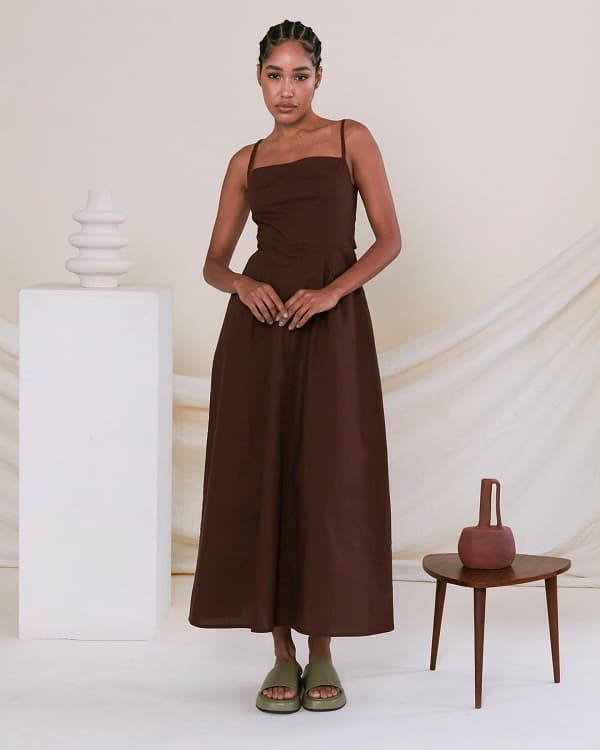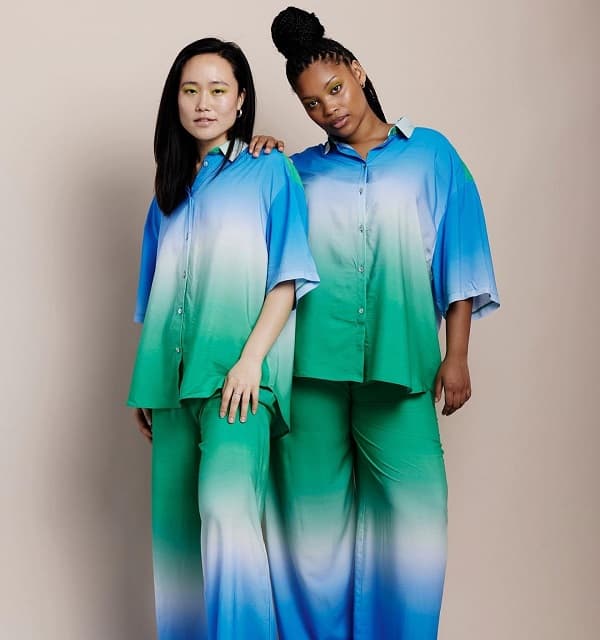Sustainable fashion is an industry term used to describe the process of designing and producing clothing, shoes, bags, and other accessories using sustainable methods. This can include using environmentally friendly materials, using ethical manufacturing processes, and supporting fair trade practices.
The sustainable fashion industry has seen a lot of growth in recent years as consumers become more conscious of the environmental and social impacts of their clothing choices. This trend is only set to continue in the coming years, with more and more brands committing to sustainable practices.
So what can we expect from the sustainable fashion industry in 2023? Ahead, we take a look at some of the key predictions for the future of sustainable fashion. From new materials and technologies to new business models, 2023 is shaping up to be a big year for sustainable fashion.
What is sustainable fashion?
Sustainable fashion is a growing trend in the fashion industry. It is defined as a way of designing, producing, and purchasing clothing that reduces the negative environmental and social impact of the fashion industry. There are many ways to make fashion more sustainable, such as using sustainable materials, supporting fair trade, and reducing waste.
As the fashion industry continues to grow, it is important to consider the environmental and social impact of our clothing choices. Sustainable fashion is one way to make a positive impact on the world, and it is something that we can all support.
 Photo: Instagram.com/_selfi
Photo: Instagram.com/_selfi The benefits of sustainable fashion
There are many benefits to sustainable fashion. For one, it is better for the environment. Sustainable fashion practices help to reduce pollution, conserve resources, and protect the environment. Additionally, sustainable fashion often uses natural materials that are better for your skin and health and it’s often more affordable than traditional fashion, as it doesn’t require the use of expensive materials or labor.
If you’re looking to make a positive impact on the environment and your wardrobe, sustainable fashion is a great option.
The challenges of sustainable fashion
The challenges of sustainable fashion are numerous and complex. But they can be boiled down to three key areas: supply chain, design, and consumer behavior.
The supply chain is where the majority of the environmental impact of fashion occurs. It includes everything from the cultivation of raw materials to the manufacture of finished garments. And it’s often fraught with problems like water pollution, toxic chemicals, and forced labor.
Design is also a major challenge for sustainable fashion. Many garments are designed in a way that makes them difficult or impossible to repair, which means they have to be replaced more often. And fast fashion design trends encourage consumers to buy new clothes frequently, rather than investing in quality pieces that will last for years.
For fashion to be sustainable, the way we produce clothing needs to change. We need to find ways to use less water and energy in the production process, and we need to find ways to recycle and reuse materials. We also need to convince consumers to buy fewer clothes and to take better care of the clothes they do have.
Consumer behavior cannot also be denied as it’s a huge barrier to sustainable fashion. People are used to buying cheap clothes and disposable fashion, and it can be hard to change these habits. What’s more, sustainable fashion can often be more expensive than its conventional counterpart, which makes it less accessible to many people.
But it’s not all doom and gloom. There are plenty of people working hard to make fashion more sustainable. And as more consumers become aware of the issues, there’s hope that the industry will start to change for the better.
 Photo: Instagram.com/me_and__b
Photo: Instagram.com/me_and__b What you can do to support sustainable fashion
The fashion industry pose a huge impact on the environment. In fact, it is one of the most polluting industries in the world. But there are things you can do to support sustainable fashion and help reduce the negative impact of the industry on the environment.
Here are a few things you can do to support sustainable fashion:
1. Choose sustainable materials
When choosing what to buy, look for sustainable materials like organic cotton, hemp, bamboo, and wool. These materials are produced in a way that minimizes the negative impact on the environment.
2. Choose brands that are committed to sustainability
There are an increasing number of fashion brands that are committed to sustainable practices. When shopping, look for brands that use sustainable materials, limit their environmental impact, and fair to their workers.
3. Choose quality over quantity
One way to reduce the negative impact of fashion is to choose quality over quantity. Buying fewer, better-made pieces will last longer and save you money in the long run.
4. Shop secondhand clothing
Another way to make your fashion more sustainable is to shop secondhand. Buying secondhand clothing reduces the demand for new clothing, which saves resources and reduces pollution.
5. Educate yourself on the issue and learn about the impact of the fashion industry on the environment.
Knowledge is power and understanding the need for sustainable fashion is a great start to getting involved in the campaign. You can educate yourself by being a conversation starter amongst friends and colleagues who are more versed in the topic than you. You can also use online resources to learn more about why it’s important to protect the environment.
6. Avoid overconsumption and only buy what you need.
7. Repair and reuse items instead of throwing them away.
8 Recycle or donate clothes that you no longer wear.
By taking these steps, you can help make the fashion industry more sustainable and reduce its negative impact.
What can we expect from sustainable fashion in 2023?
In 2023, we can expect to see a lot more from sustainable fashion. Consumers are becoming more aware of the environmental and social impacts of the fashion industry, and they are demanding more from brands. We will see more brands commit to sustainable practices, such as using recycled materials, investing in sustainable production methods, and decreasing their carbon footprints.
We will also see more brands partner with NGOs and other organizations to support sustainable initiatives. In addition, we can expect to see sustainable fashion become more mainstream, as it is featured more in the media and as celebrities and other public figures continue to wear sustainable brands.
Here are a few more predictions:
- More sustainable materials will be used. This could include things like bamboo, organic cotton, and recycled materials.
- Sustainable fashion will become more affordable. As more companies adopt sustainable practices, the cost of sustainable fashion will go down.
- There will be more sustainable fashion options. We’ll see more sustainable wardrobe staples, as well as more fashionable and unique sustainable pieces.
- Sustainability will become a selling point. Many fashion brands will highlight their sustainable practices in order to appeal to environmentally-conscious consumers.






